Figures & data
Figure 1. Parameter space of D0 and ![]()
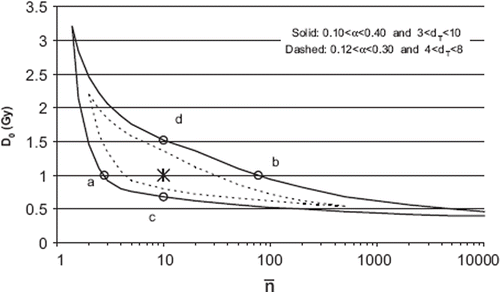
Figure 2. Calculated survival curves for the LQ model with α/β = 3, and α equal to 0.206 (black line), and for the SHMT model (grey line). The grey dashed line (EXP) shows the extrapolation of the linear portion of the SHMT target curve. The smooth transition from the LQ- to the linear portion of the SHMT model is at the dose dT = 5.8 Gy (indicated by the circle). The dose of 2 Gy, to which all DVH data were converted, is marked in the figure.
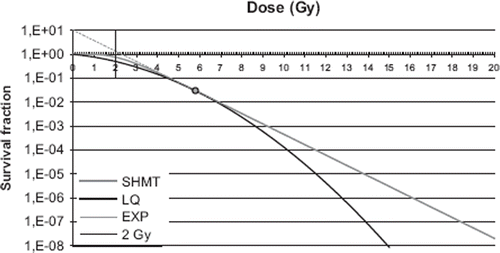
Figure 3. Dose-volume-histograms (DVHs) of the total lung volume minus GTV in cm3 for the 57 SBRT patients. Six patients with RP2+ are marked with black lines. An enlargement for better visualization is inserted.
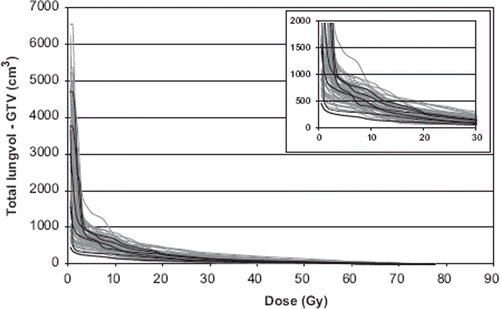
Table I. Values of the parameter n from the NTCP modelling.
Table II. Summary of published SBRT data. Incidences of RP2+ and estimated EUD.
Figure 4. Incidence of RP2+ as a function of equivalent uniform dose (EUD) calculated with n = 0.71. The line shows NTCP calculated with parameters m = 0.30, D50 = 30 Gy. The value of the parameter n was determined from the data point EUD = 15 Gy and incidence of RP2+ = 10.5% (Baumann et al. 2008). As a sensitivity test of n, the incidences 5% (0.05) and 15% (0.15) at 15 Gy, were modelled (dotted line). References in .
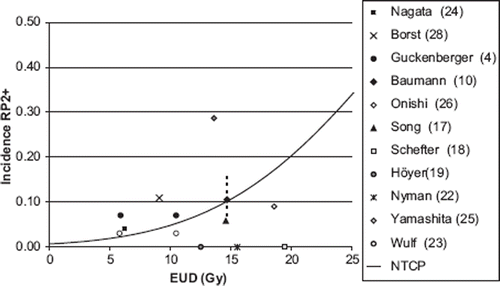
Figure 5. Fractional NTCPfract calculated with DVH-data corrected with USC and LQ (α/β = 3) as a function of cut-off dose for a representative patient. The plot illustrates the cumulative contribution to the NTCP. With the USC correction the low doses have less impact on NTCP compared to what is seen with the LQ correction.
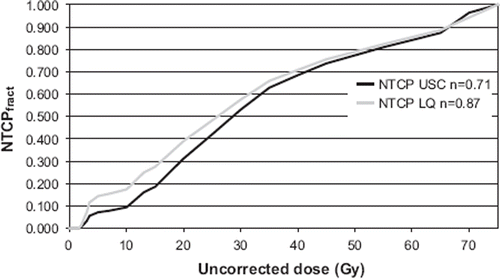
Figure 6. The total uncorrected dose given in three fractions as a function of the dose given in 2 Gy per fraction (EQD2) using different fractionation correction models (LQ, uncorrected and USC). The dose level of 15 Gy × 3, used in the clinical data set is marked in the figure. Note, this refers to lung and not to tumour tissue.






